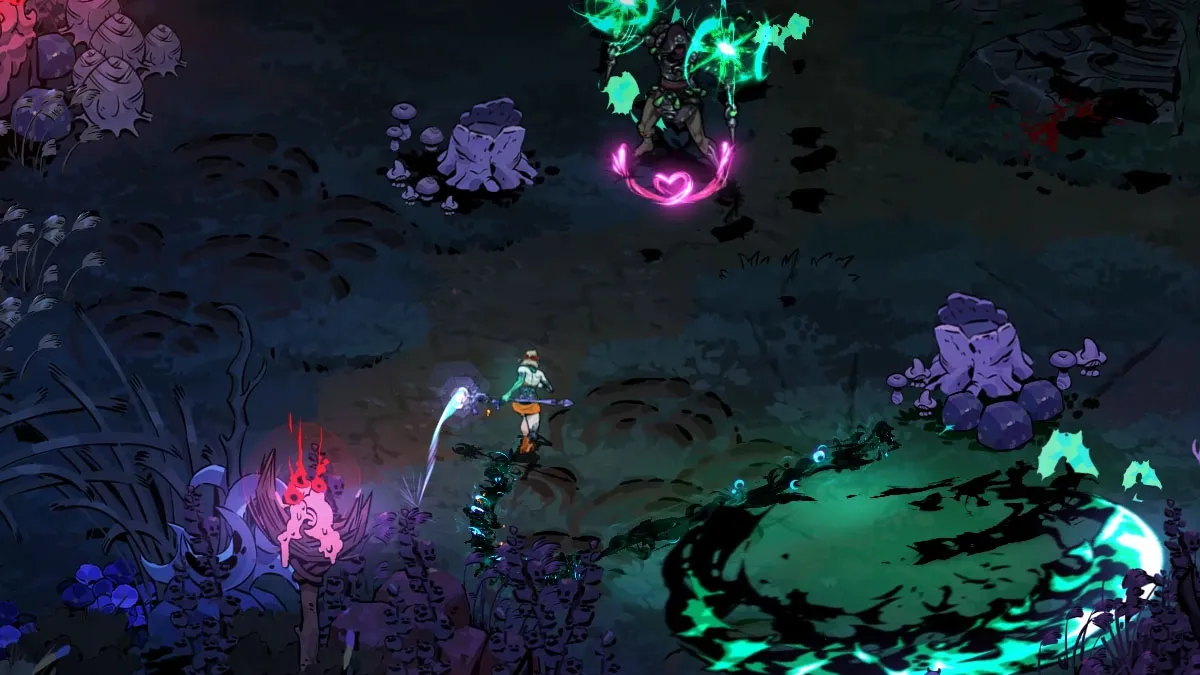If you had asked me in 1992 to guess what videogames would be like in 2006, I’d have chewed your ear for hours about all sorts of cool new stuff that was just over the horizon. Back then, I was a chubby 14-year-old kid who’d immigrated from the back woods of Vermont to the big city of Albany, NY. (It looked pretty big back then, anyway.) My eyes had been opened to the endless possibility of “modern” technology; it seemed anything was possible. Sadly, what we have today is far less impressive than what I’d expected.
If you don’t remember 1992, it was the golden age of Virtual Reality. The Lawnmower Man was in theaters, and everybody who saw it wanted to have cybersex with a polygonal babe (or dude). Sega had just announced their Sega VR headset, which not only looked totally badass but seemed poised to bring affordable VR to the masses. That, combined with their amazing line of Virtua games, had me convinced the future of wholly immersive gaming was right around the corner.
I can’t imagine how disappointed I would have been if I could have looked into the future and glimpsed
today’s slate of pretty but predictable sequels.
Back then, Super Mario Kart was hugely popular, CD-ROM games were all the rage, Dune II defined the RTS-genre and Joseph Lieberman was getting uppity about Mortal Kombat. Today, Mario Kart is more popular than ever, most PC games still ship on CD-ROM, RTS titles look and play just like Dune II did, and Lieberman’s still trying to convince parents that games are corrupting the minds of their children, even though many of those parents today were avid gamers back in 1992.
Sure, today’s graphics look pretty hot, and our videogame systems do some impressive stuff, but we’re still playing the same games in the same detached way. It’s rare that a game genuinely sucks you in or makes you genuinely immersed. This is where the games of 2020 will make today’s offerings seem primitive by comparison.
I wish I were talking about VR headsets and force-feedback body suits and teledildonics. Sadly, it seems those devices are destined to remain just as obscure tomorrow as they are today. I’m instead referring
to an entirely different sense of immersion: putting yourself in the game by creating a persistent in-game version of you that exists across titles, providing a seamless transition from Guild Wars to Dungeons & Dragons Online, or, more interestingly, from World of Warcraft to Warcraft III.
Even now, before you pop any disc into your Xbox 360, you can set some default options that apply to any game you play. You can always be rocking out to Sonic Youth whether you’re being fragged in Ghost Recon: Advanced Warfighter or lapped in Project Gotham Racing 3, and the game will always know whether to invert your Y-axis or disable controller vibration. This is far from groundbreaking, but think about where things might go in 14 years. When we can jump from one game to the next and have our control-scheme and soundtrack move with us, just how far are we from having our hair styles and eye colors carry over, too?
Right now, the only way to recognize your friends in games is by reading the names floating over their heads. That’s like wearing a name tag to your soccer league every Tuesday night.
When you play a community-based game in 2020, your friends will recognize you because of the Pac-Man tattoo on your digital cheek whether you’re casting a fishing reel or gripping a plasma rifle. This avatar will be someone they will identify as “you,” and you, of course, will recognize them in the same way.
Modern RPGs and sports titles have endless character creations, enabling you to spend hours tweaking this and that to create the perfect representation of your ideal virtual self. After all that, it’s rare that you create a character you actually feel attached to, because when you move on to the next game, your character stays behind. Even if you spend hours re-sculpting your earlier creation, it will never be the same.
In order to really feel immersed in a game, you have to care about the characters within it, and the best way to do that is to make them familiar to you.
Part of this relies on you being “you” whenever you’re online, whether you’re capturing the flag in a fast-paced shooter or are whispering sweet nothings to a hot polygonal babe (or dude) in a dark corner. Those complex character creation utilities we see today will be made independent of individual games, as will the characters they create. And, once a character can exist in more than one game, it’s a small step to bring them to life in the space between games, too.
That space is in large part created by the way we access our games. Today when you want a new game, you go to a store and buy it. When you want to play the game, you put in the disc. When you want to change games, you take out the disc and put in another
one. Regardless of how immersive those two games are, any sense of “being there” is shattered by pushing buttons and opening jewel cases. When you take advantage of a service like GameTap, that dividing line between games starts to blur a bit: There, you pick which game to play in the same way you select a fighter in Tekken. Instead of swapping plastic platters or clicking through drab menus, you scroll past colorful pictures. Even though you may be moving from Reader Rabbit to Rampage, the process is fluid.
That fluidity will only increase. Eventually, we’ll reach a point where there won’t be any dividing lines between games at all. Picture gaming in 2020 as Second Life meets Disney World. Instead of downloading or installing a copy of Madden 2021, you and your persistent character will wander to the EA Sports Stadiums and see who’s playing what. You can watch a few plays from up on the bleachers and throw on your gear to join in if you like, or mosey on over to the Streets
of Rage and beat up on a few nameless thugs instead.
If you’re attracted to a medieval-themed RPG, you’ll want to stop by the costume shop before heading in, donning some sexy armor or a big mysterious robe, maybe even sucking down a digital protein shake to bulk up a bit before grabbing your sword and diving in. Your first short sword will, of course, be free, along with some ugly purple leggings and a tunic for decency’s sake. But, if you want your character to look good, you’ll have to pay for it, and not with play money.
Gaming in 2020 won’t be about buying individual games; it’ll be about paying monthly fees for access to gaming areas, then getting hit with extra fees for new goodies. Stop to visit the Gran Turismo Speed Complex on the outside of town, and a grinning virtual representation of Kazunori Yamauchi will hand you a set of keys to your very own virtual Toyota Vitz. The Vitz, of course, will be slow and painted some ugly green color with a stupid license plate that reads “SLOPOKE.” A new plate will be $1, a new paint job and some vinyl will be $5, and that sexy Porsche parked over in the German concourse (with the drum and bass thumping in the background) will be $20.
Ideally, you’d be able to take that free Vitz and drive it wherever you want through a massive and wide open gaming cyberspace. However, given that we live in a (mostly) capitalist society, that’s awfully unlikely. If today’s “big three” are still around in 2020, you can expect Microsoft’s Xpark, Sony’s Club Playstation, and Nintendo’s Mushroom Kingdom to offer competing services. As people in Second Life buy virtual property and build digital houses today, videogame publishers will morph into property developers tomorrow, buying sections of cyberspace in these destinations where they can insert their attractions. The big boys like EA and Ubisoft will litter the main drags with glitzy attractions, while you’ll have to wander off the beaten path to find the smaller, less popular ones.
The move to this sort of model has already begun with GameTap and Sony’s Station Access, each offering ala-carte gaming for a fee. NCsoft has a whole lineup of simple yet fun online games planned that will be free to download and play, each funded entirely by in-game purchases. And while people might get curmudgeonly about paying for the right to access a game rather than paying to own one, that’s really what we’ve been doing all along. The pretty box and shiny disc have given us a false sense of ownership; read a game’s EULA, and you’ll realize how little you actually own.
Instead of owning useless boxes and discs, you’ll own cars and costumes, wigs and one-click makeup kits, each a virtual tsotchke with a real price tag attached. Collecting stuff has always been a hugely important part of gaming, but whatever you collect almost always stays locked within the game in which you did the collecting. This is epitomized in Animal Crossing, which made hoarding junk a fiendishly addictive pastime. However, when its portable follow-up, Wild World, came along, for many gamers the futility of its GameCube predecessor came to light: What good is a massive collection of pretty things if it all disappears and you can’t show it off to everyone?
When you create a world between the games and allow your character to live there, those collectables can live there, too. Surrounding and adorning your in-game self with goodies will help these gaming destinations feel a little more like a home away from home. Like a hunter might adorn the walls of his weekend cabin with the stuffed heads of his conquests, racers will be able to decorate the walls of their pads with digital shots of victories and place reflective trophies on shelves wrapped in wooden textures.
When you visit a friend’s apartment to chat, they might lovingly show you the chipped and scarred chest plate they wore to win a gladiatorial tournament, armor hanging on the wall next to their prized BFG-18K rifle and the 22-pound trophy bass they caught last week. It’ll be like Animal Crossing all over again, except you won’t be digging up fossils and organizing furniture in a little cocoon, you’ll be winning awards and showing off the fruits of your labor to the world at large.
Having a constant presence and continuity within and between games will make for a very different and very immersive gameplay experience. Gaming will be more compelling and more addicting than ever, but despite all that, you can be sure we’ll still be playing the same basic games. In 2020, you can look for me in Mushroom Kingdom cruising around Mario’s Xtreme Putt-Putt and Go-Kart Experience. I’ll be the one wearing the Lieberman mask and talking with the funny Vermonter accent.
Tim Stevens is a freelance writer who covers videogames and software engineering. His work can be seen at a variety of interesting places like G4’s X-Play and Yahoo! Videogames, along with his blog, DigitalDisplacement.com.




Published: Jul 11, 2006 12:00 pm